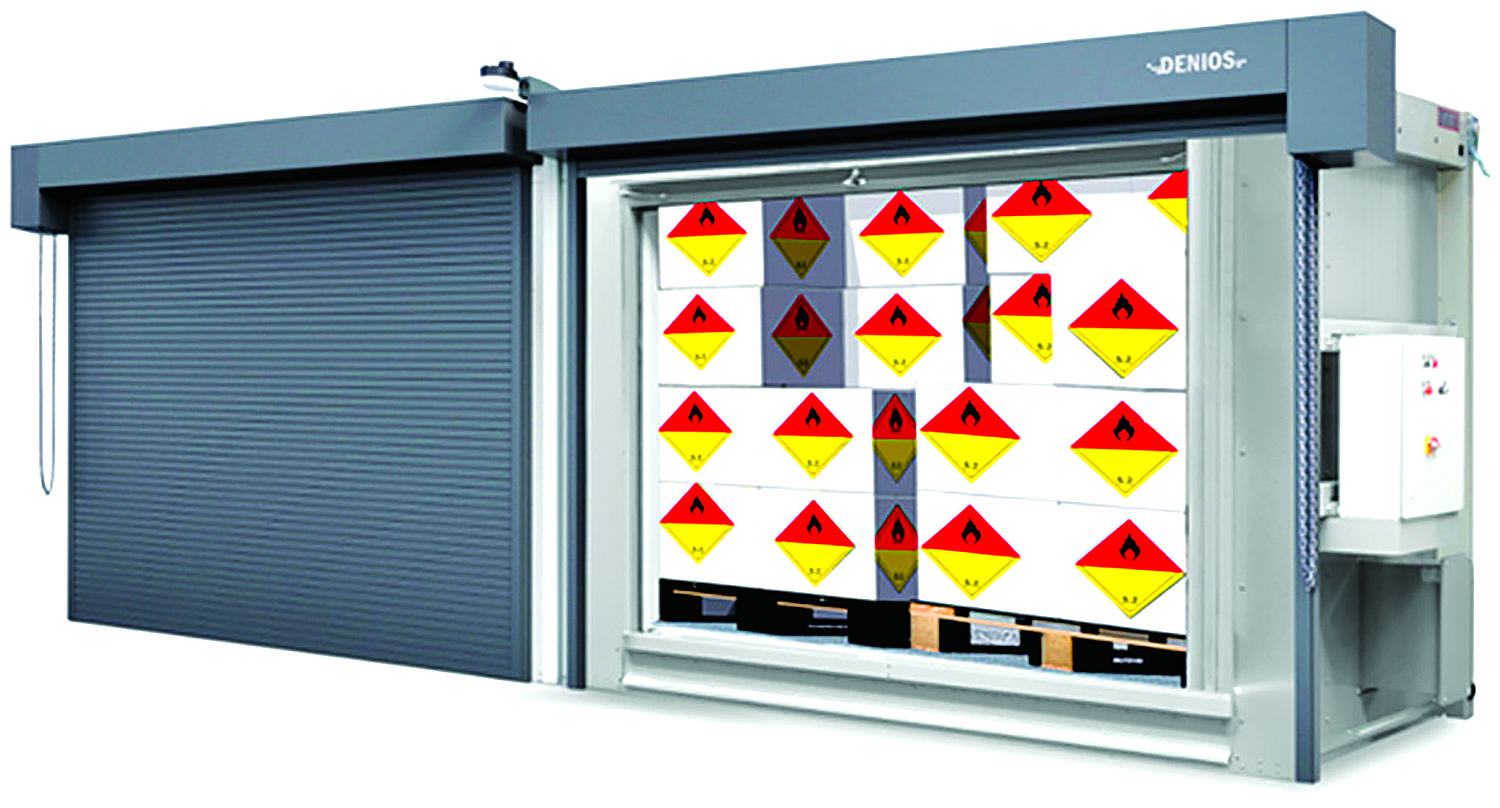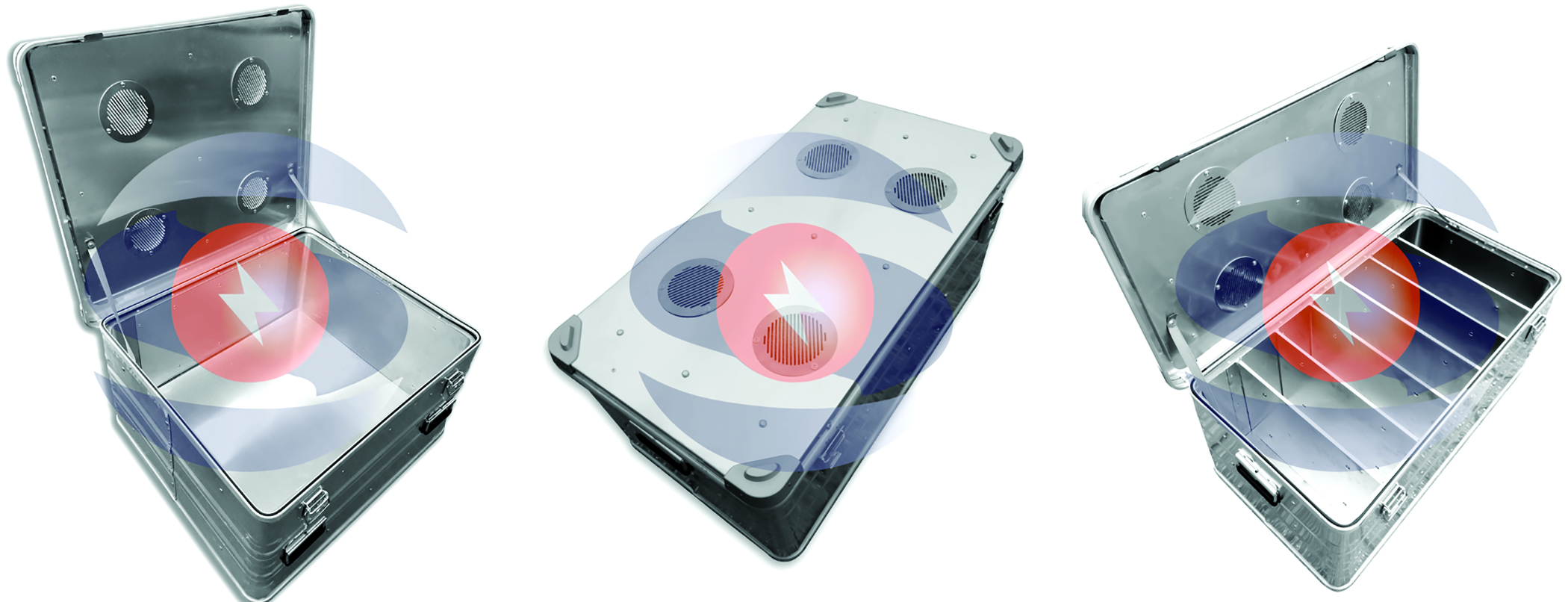
Designed in Germany and now manufactured in the United States for North American installations, Denios Rack Fire Protect buildings are specifically aimed at storage of combustible materials including lithium-ion batteries of various shapes and sizes. Building fabrication and material features provide 2-hour fire resistance, according to the company.
A recent survey from data analytics firm GlobalData indicates that roughly 75% of mining-industry corporate respondents reported increased investment in safety-related areas such as drones, collision avoidance and fatigue detection, while approximately 50% also reported further investment in battery-electric vehicles at levels ranging from trials to full implementation. As BEV acceptance accelerates throughout the industry, it also brings new safety concerns: The batteries used to power most of these vehicles and many industrial tools have the potential to introduce additional fire and explosion hazards. Lithium-ion batteries must be protected against a range of incidents including fire, leakage, impact damage, overheating and overcharging.
Although research is underway around the world to develop higher-performance batteries with less flammable electrolytes, mines are faced with two immediate problems: Lithium-ion batteries are expected to dominate the market for years, so how best to handle and securely store them – and what is the best way to extinguish battery fires when they occur?
A paper presented at the SME Annual Conference earlier this year addressed the latter issue: US government researchers reported the results of a study regarding effectiveness of different fire suppression systems on Li-ion battery pack fire extinguishment.*
The presentation focused on a detailed experimental study conducted at the National Institute for Occupational Safety and Health (NIOSH) Pittsburgh Mining Research Division (PMRD) to investigate the effectiveness of different fire suppression systems on Li-ion battery pack fire extinguishment. Tests were conducted in a well-ventilated container. Two sizes of battery packs (12V, 24V) were heated to trigger thermal runaway and fire. Water mist with different flow rates, ABC powder, type D dry chemical, and water mist with F500 encapsulator-agent additives were used as the fire suppression agents.
Multiple thermocouples were installed on the battery packs to measure the temperature evolution during the tests. The results indicated that the water mist with F500 additives is the most effective suppressant among the agents tested. Dry chemicals, according to the authors, do quench the fire for a moment, but cannot prevent re-ignition of the battery since they do not provide enough cooling. These research findings, said the authors, can be used to develop safer battery fire suppression techniques in mining environments.
Until safer battery types are developed, secure storage of Li-ion batteries will be a major concern. According to experts, storage facilities should be designed with: 1) a heat and fire barrier to help prevent batteries igniting; 2) be liquid-tight to catch hydrofluoric acid leaks; 3) offer secure storage prohibiting unauthorized entry; 4) protect against impact damage; 5) be fabricated with non-combustible surfaces for battery charging; and 6) offer a cool, dry environment for safe battery storage.
Some recent product releases offer possible solutions. For example, new Rack Fire Protect (RFP) buildings from Denios US, which are fire rated for two hours at 2,000°F (1,093°C), are claimed by the company to be ideal for the storage of Li-ion batteries.
RFP fire-rated buildings, according to the supplier, provide safe and legally compliant storage of flammable or corrosive materials as well as Li-ion batteries. Adjustable racking provides the flexibility to store batteries of many shapes and sizes. The buildings, built in accordance with FM Approval 6049, NFPA, OSHA, EPA-CFR 40, NBCC, NFCC and ETA/21/0642, can be located inside or outside, and feature fully galvannealed panelized construction, insulated with fireproof, 5-in. mineral wool panels. Each building is equipped with a fire-rated roll-up door which is FM approved and UL-listed. Each structure meets the structural requirements for the installation location (wind and snow loads). Roof drainage prevents water damage.
Technical ventilation can be added to ensure 150-cfm air changes. Additionally, monitoring controls can provide visual and audio annunciation of measured data deviations, with information presented on touch panels that are suitable for indoor or outdoor use. Wet or dry fire suppression systems are available as well as internal bonding and external grounding connections.

LithiumSafe says its Battery Box is designed to safely contain fires resulting from ignition of Li-ion batteries by providing safe, filtered gas venting as protection against fire-related explosions caused by extremely high internal gas pressure. The boxes also employ thermal insulation to prevent the box itself from melting during an intense battery fire.
The RFP is ideal for larger volume users, according to Denios. For smaller quantities of Li-ion batteries, the company and others offer a variety of storage and charging cabinets as well as transport boxes. For instance, Netherlands-based LithiumSafe last year introduced its Battery Box, claimed to be the first lithium battery fire containment box solution engineered to fight all thermal runaway problems.
According to the company, the boxes are insulated with advanced materials that can withstand peak temperatures up 1,400°C and feature a unique filter system in the lid designed to handle high volumes of flammable gas that can be generated in the event of a battery thermal runaway. The renewable filter material should be changed annually and can be accessed by unscrewing the ventilation caps from the inside of the lid.
The Battery Box can be equipped with an active cooling ventilator unit linked to a thermostat. When the indoor temperature exceeds the maximum allowed temperature, a fan will be activated and automatically shuts down when no longer required. The LithiumSafe Battery Box is available in various standard sizes, with custom sizes available on request.






